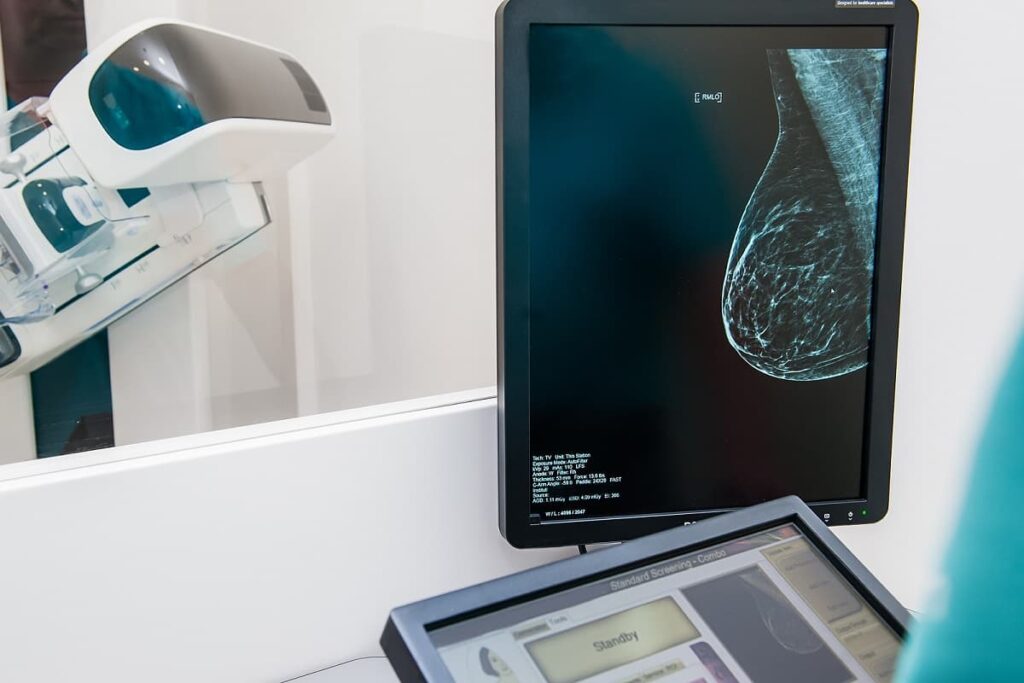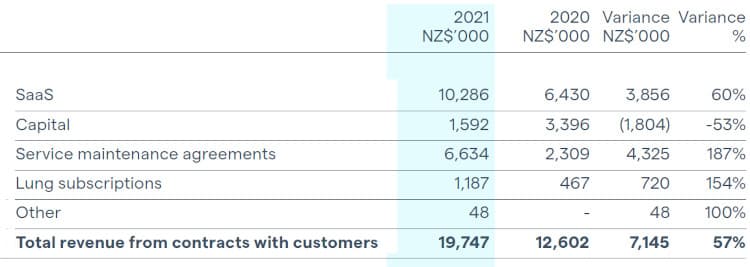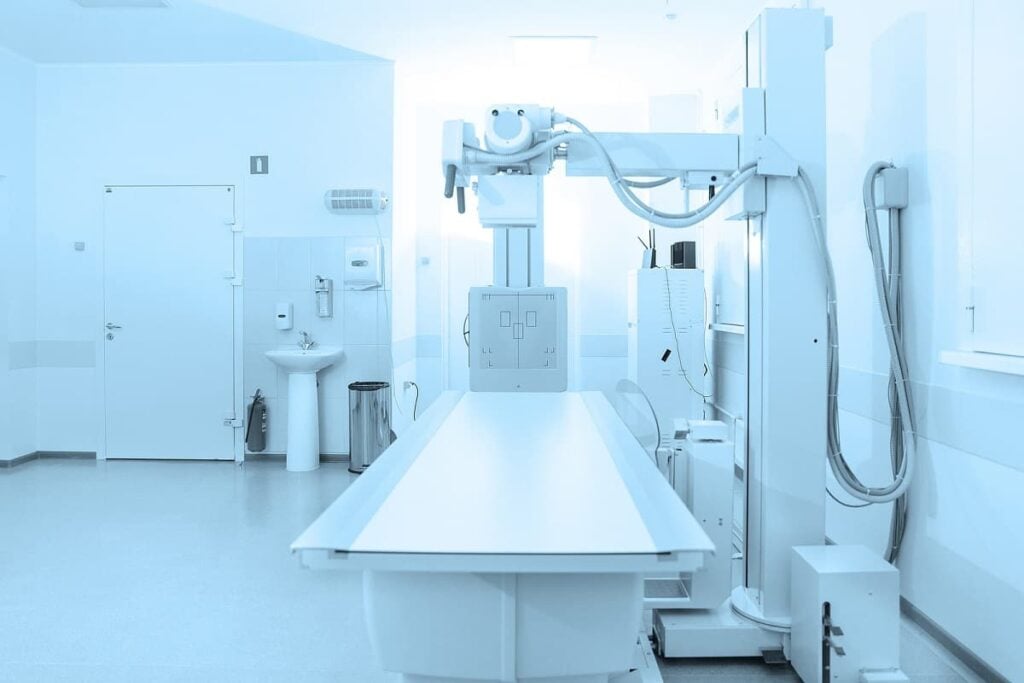Why We No Longer Like Volpara Health Stock
Table of contents

There are stocks that you want in your portfolio because the technology sounds cool or the company is on a mission to save the world, or because you don’t want to miss out on the latest craze like cryptocurrency or pot stocks. That’s actually called motivation, because there are no inherent good reasons why you would invest in a stock based on these sorts of subjective, emotional reasons. But it happens to the best of us, such as prematurely buying both Desktop Metal (DM) and Ginkgo Bioworks (DNA) based on the excitement around the technology. That’s why we constantly work on developing objective criteria, like our simple valuation ratio for growth stocks or the methodology behind balancing the Nanalyze Disruptive Tech portfolio.
This enables us to revisit and reevaluate these and other companies that we have identified as possible investments in our portfolio with better tools to make rules-based decisions. Today we’re going to take another look at Volpara Health (VHT.AX), a software-as-a–service (SaaS) company that has developed a comprehensive, cloud-based breast-imaging analytics software. It’s a company that has been on our “like” list after we first profiled it back in 2017 due to the growth story, management transparency, favorable regulatory environments, and even the exposure to foreign currency. Does Volpara Health stock deserve more love or should we focus our investments in life science companies elsewhere?
Volpara Health Stock and AI Medical Imaging
Volpara Health is based in New Zealand, but also does business in Australia and North America. While not privy to exact percentages, the United States represents the company’s largest market for its suite of AI-powered SaaS products for breast cancer screening. Basically, the software does it all, from tracking patient care to performing risk assessments to improving patient positioning and imaging quality. The screening platform is especially designed to detect tumors and assess risk for women with dense breast tissue, which can make it more difficult to interpret mammography imagery.
About five years ago, Volpara said “it had not taken a machine-learning approach” to its software development but at some point, it would leverage the large amount of data being acquired to deliver new insights using AI. It looks like that finally happened, with 40 million mammography images for algorithms to train on. One such product is TruPGMI, which uses AI to automatically and objectively assess the positioning of the patient and resulting image quality.

This certainly helps the 13-year-old company compete against what is growing into a horde of AI medical imaging startups. Indeed, funding to AI healthcare startups, in general, reached $12.2 billion last year, according to the big brains at CB Insights. That’s nearly a fifth of the $66.8 billion that went into AI companies in 2021. At least 40 AI healthcare companies have FDA-approved AI-based algorithms for various radiology solutions, according to the Medical Futurist database. The World Economic Forum recently touted the potential for AI to make breast cancer screening more accessible and affordable, naming a few companies with low-cost solutions. And at least one other public company, iCAD (ICAD), is also focused on breast cancer. All that to say, Volpara operates in what is becoming an intensely competitive market.

Despite that, the company increased its market share in the United States to 32% last year, up from less than 10% back in 2019.
Volpara Acquisitions
Volpara has also acquired a couple of companies since we last checked in. In 2019, after acquiring MRS Systems for $14.6 million, Volpara added three new software products to its breast cancer screening platform, including one called Volpara Risk, which provides insights into high-risk patients. Less than two years later, Volpara spent another $18 million on CRA Health for its breast cancer risk-assessment tool, which is supposed to replace the current version of Volpara Risk. That sort of left us wondering about the ROI on the MRS Systems acquisition, if Volpara felt compelled to spend even more on a stand-alone solution that it must again integrate into its own platform.
Management must have read our mind, because the company noted that shortly after the January 2021 acquisition of CRA Health, Volpara scored its highest-value contract to date, worth more than $400,000 annually. (That’s just not that big in the world of SaaS contracts.)
We No Longer Like Volpara Stock
That obviously added to what turned out to be a record year in revenue for Volpara at about $14.2 million. (All numbers here are converted into U.S. dollars from Australian and New Zealand dollars.) As you can see below, more than half of revenues in 2021 came from breast screening SaaS products, most of which are based on one- to five-year-long contracts. However, we were surprised to see that a large portion is also based on what the company calls service maintenance agreements, which are actually tied to capital sales, such as software licenses and server hardware. That means more than 40% of revenues are non-SaaS, which is not exactly very SaaSy.

While total revenue was up nearly 60% last year, the stock itself is down about 50% over the last 12 months, with a market cap just south of $125 million and shares trading at 50 cents. We’ve been waiting for the company’s revenue growth to translate to market cap, but it’s just not happening and it’s hard to see it reaching our threshold of $1 billion any time soon. Think about it: Volpara already owns a third of the entire U.S. breast screening market by its estimation. While penetration increased rapidly in 2020, market share only ticked up 5% last year. We have to start wondering where the ceiling is, especially with competing solutions on the market.

Volpara is hoping adoption of a new FDA rule to the Mammography Quality Standards Act will help drive business by requiring specific language about breast density in screening summary reports. But there’s no timeline to if and when the amendment would go into effect after first being proposed in 2019. The company also said it will renew focus on its lung screening tech, belatedly chasing after those Rona dollars, after relegating it to the back burner in 2021. And while Volpara claims customers in nearly 40 countries, its global strategy remains unclear.
Conclusion
After taking a deeper look into Volpara Health Stock, we really don’t see the company ever growing beyond its micro-cap status, even with projected revenue growth of between 27% and 32% this year. The SaaS piece isn’t as robust as we first thought. We also think there are just too many other AI healthcare companies, especially in medical imaging, for Volpara to emerge as much more than just a niche player. We’ll be removing VHT from a “like” to “avoid” and will consider revisiting the company should the market cap ever exceed $1 billion.
Sign up to our newsletter to get more of our great research delivered straight to your inbox!
Nanalyze Weekly includes useful insights written by our team of underpaid MBAs, research on new disruptive technology stocks flying under the radar, and summaries of our recent research. Always 100% free.















